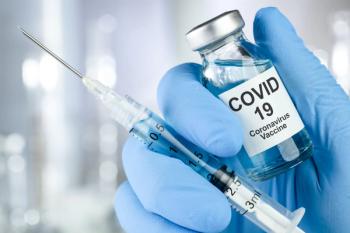
FDA Approves Gene Therapy Onasemnogene Abeparvovec for Broader SMA Population
Key Takeaways
- Onasemnogene abeparvovec-brve is the first gene replacement therapy approved for SMA patients aged 2 years and older, expanding access beyond infants.
- Phase 3 trials demonstrated significant motor improvements and stabilization in patients receiving the gene therapy compared to a sham procedure.
Onasemnogene abeparvovec-brve is now the first gene replacement therapy approved for spinal muscular atrophy in patients 2 years and older.
The FDA approved onasemnogene abeparvovec-brve (Itvisma; Novartis), a one-time, intrathecal gene therapy for
The agency said
SMA is a rare, neurodegenerative disease caused by the loss or mutation of the SMN1 gene, leading to progressive motor neuron death, muscle weakness, and potentially severe disability or early mortality. Approximately 9000 Americans currently live with SMA, and unmet needs remain especially for older children, adolescents, and adults who have not historically had access to gene replacement therapy.2
Phase 3 Data Support Motor Improvements and Stabilization
This approval was based on data from the registrational Phase 3 STEER study (
After 52 weeks, patients receiving gene therapy achieved a 2.39-point improvement on the Hammersmith Functional Motor Scale Expanded (HFMSE), compared with a 0.51-point gain in the sham arm (between-group difference, 1.88 points; P = .0074). Secondary outcomes, including Revised Upper Limb Module scores and clinician-reported global impressions, favored the gene therapy group, though they did not reach statistical significance because of the prespecified testing hierarchy.
Motor benefits were also observed in STRENGTH, which enrolled 27 patients aged 2 to younger than 18 years who had
Across both trials, the most common adverse events were pyrexia, upper respiratory infections, vomiting, and common colds. Transaminase elevations were infrequent, low grade, and transient, and no cases meeting Hy’s law criteria occurred. FDA regulators also leveraged efficacy and safety data from onasemnogene abeparvovec-xioi (Zolgensma), which contains the same active ingredient but is administered intravenously, to support the expanded indication.1
Intrathecal Delivery Enables Fixed Dosing
Unlike the intravenous formulation approved only for patients younger than 2 years, the intrathecal administration allows direct delivery to motor neurons in the cerebrospinal fluid. The fixed dose avoids weight-based adjustments and reduces total vector exposure—an important consideration in older patients with higher body mass.
The FDA incorporated prior safety experience with the intravenous formulation into its review but included additional warnings for adults due to potentially increased risks of hepatotoxicity and cardiotoxicity, particularly in those with chronic medical conditions. Novartis plans to make onasemnogene abeparvovec-brve available in the US beginning in December 2025.2
References
- FDA approves gene therapy for treatment of spinal muscular atrophy. News release. FDA. November 24, 2025. Accessed November 25, 2025.
https://www.fda.gov/news-events/press-announcements/fda-approves-gene-therapy-treatment-spinal-muscular-atrophy - Novartis receives FDA approval for Itvisma, the only gene replacement therapy for children two years and older, teens, and adults with spinal muscular atrophy (SMA). News release. Novartis. November 24, 2025. Accessed November 25, 2025.
https://www.novartis.com/news/media-releases/novartis-receives-fda-approval-itvisma-only-gene-replacement-therapy-children-two-years-and-older-teens-and-adults-spinal-muscular-atrophy-sma - New Novartis phase III data demonstrate meaningful efficacy and safety results of intrathecal onasemnogene abeparvovec in broad patient population with SMA. News release. Novartis. March 19, 2025. Accessed November 25, 2025.
https://www.novartis.com/news/media-releases/new-novartis-phase-iii-data-demonstrate-meaningful-efficacy-and-safety-results-intrathecal-onasemnogene-abeparvovec-broad-patient-population-sma - Mattina C. STEER data open door to SMA gene therapy for wider age range of children. AJMC®. March 19, 2025. Accessed November 25, 2025.
https://www.ajmc.com/view/steer-data-open-door-to-sma-gene-therapy-for-wider-age-range-of-children - McNulty R. Switching to gene therapy after nusinersen or risdiplam may benefit patients with SMA. AJMC. August 15, 2025. Accessed November 25, 2025.
https://www.ajmc.com/view/switching-to-gene-therapy-after-nusinersen-or-risdiplam-may-benefit-patients-with-sma
Newsletter
Stay ahead of policy, cost, and value—subscribe to AJMC for expert insights at the intersection of clinical care and health economics.









































